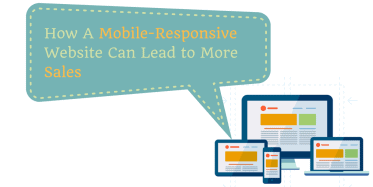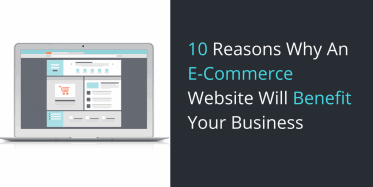Traditional Marketing and Online Marketing
Traditional Marketing versus Digital Marketing: The Differences
Traditional Marketing (Outbound Marketing): You use marketing funnels such as television, radio, magazines, newspapers, the traditional yellow-pages, direct mail, trade shows, and event sponsorships to push your messages to potential BUYERS. The SELLERS (you) find potential BUYERS by pushing your messages out to them.

Digital Marketing (Inbound Marketing): You use digital marketing funnels (through the Internet) including websites, social media, pay-per-click advertising, and search engine optimization (SEO) to help your potential BUYERS find you. In other words, as a SELLER, you gain potential BUYERS by positioning yourself on the Internet strategically so BUYERS find you.
Here are some examples of Inbound Marketing relationships between potential BUYERS and SELLERS: A person looks up a service on a search engine with keywords related to a service you provide. A customer of yours refers a friend on social media to your website via a shared link. A BUYER finds you because they see you’re listed in the top 3 of Google’s pay-per-click ads or in the top 10 of search engines’ organic listings.
You could say that in many ways, these two marketing categories are opposites in how they work to acquire BUYERS. One is outbound marketing, the other, inbound marketing.
There are also other marketing techniques that are “hybrids” of Inbound and Outbound Marketing. Examples include: Banner Ad Marketing, Email Marketing, Video marketing, etc. These tools combine the “PUSH” of Traditional Marketing with the “Digital Search-Power PULL” of Digital Marketing.
The Pros & Cons of Traditional Marketing and Digital Marketing:
Pros of Traditional Marketing:
- Consumers can physically flip through and save the tangible printed materials for further use. (Yellow book, Newspaper, Magazine, or Direct Mail Flyer)
- You can cast a wide audience net (Television and Radio ads)
- You have a better chance to build trust and increase conversion with direct sales (Tradeshows, Chamber of Commerce Events, and networking events)
Cons of Traditional Marketing:
- Printed materials, TV ads, and Radio ads, etc. are expensive. They’re often too expensive for small businesses to spark an initial exposure with their target audience.
- Your information and materials are usually forced upon the consumers. This leads many to ignore or tune out traditional advertisements.
- It’s difficult to track results.
- Once the promotional materials are printed, they are irreversible. Sometimes printed materials don’t look like the way you thought they would.
- Printed material is not as environmentally friendly as digital content. It also requires more time, effort, and money to recycle.
Pros of Digital Marketing:
- It’s less expensive than using Traditional Marketing to gain an initial exposure with your target audience.
- You can reach a much wider audience on the Internet, the power of social sharing can spread the word of your business from local, to national, to international.
- Results are more measurable and timely with Google analytics and other analytic tools. You can also drill down to target very specific audiences, based on geographic location, demographics, (sex, age, income, etc.) and you can target people based on their device.
- You can change your marketing messages on the fly. Also, you can publish your content very quickly and change as much, or as little, as you want.
- Consumers can access information from multiple computing devices, 24-7. The information is available, flexible, and convenient for consumers to receive it.
- It’s easy and inexpensive to have marketing material presented in multiple languages.
- It’s easy to engage with customers. You can respond immediately to complaints to provide great customer service.
- In many ways, Digital Marketing helps level the playing field and allows businesses, big and small, to compete on a more fair ground.
Cons of Digital Marketing:
- It is difficult to establish trust. Consumers can miss out on the physical face-to-face handshake present in some forms of Traditional Marketing. (Trade shows, sales presentations, etc.)
- There is often a lot of competition online.
- Digital Marketing can be time consuming if you do it all by yourself. (i.e. social media marketing and management takes quite a bit of time.)
- The large number of digital marketing providers can make it difficult to know which one to choose for optimum results.
Analysis:
Today, traditional marketing funnels like the old yellow pages, television, radio, direct mail, magazines, and newspapers are not as prominent as they were 20+ years ago. As more and more consumers use the Internet for work, purchases, and to socialize, the consumer market continues to shift to the web. This trend can have negative effects on your return on investment (ROI) for traditional marketing funnels.
Consumers today want direct and timely feedback from friends, and others, about the products and services that interest them before they make a purchase. The quickest way is to find reviews and feedback on websites, search engines, and social media. This relatively new ability for consumers to quickly learn about others experiences with the products and services they want makes digital marketing more and more attractive, effective, and in many cases, more important, than traditional marketing.
Still, there are a small number of traditional marketing funnels that are not greatly impacted by the Internet, including: Tradeshows, local business networking groups (BNI or Chamber of Commerce), and direct, word-of-mouth (WOM) referrals. The direct human interaction of these funnels will never be replaced by virtual interactions.
On the contrary, as the virtual interaction and assistance grows, the personal interaction and assistance will become even more valuable to consumers, because it’s not available as often. Traditional marketing has proven that it still has its place in your marketing plan. Today many companies are leveraging this personal interaction factor in their customer service to differentiate themselves from competitors.
Your industry or type of business will determine what percentage you should dedicate to traditional marketing. I think traditional marketing often still commands between 10%-30% of most businesses overall marketing investments.
Traditional marketing is here to stay, on a smaller scale, but it’s clear that the huge growth area is in digital marketing going forward. Today, businesses without a website and a social media presence are the equivalent of a business that didn’t have an ad in the yellow pages 20+ years ago. That’s how important digital marketing is to businesses and organizations today. I hope you found this article helpful. If you do, please share it with your others. For a free consultation regarding web design and digital marketing, please call us at (612) 590-8080.













